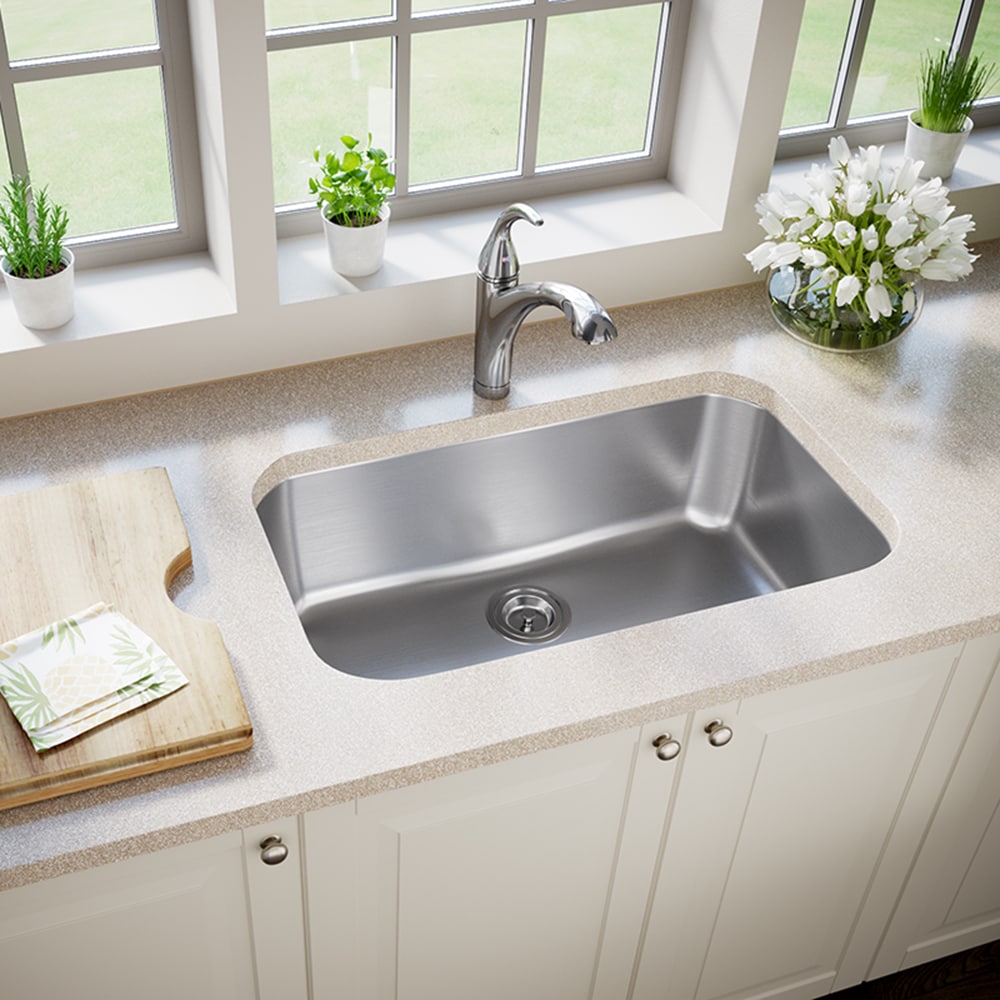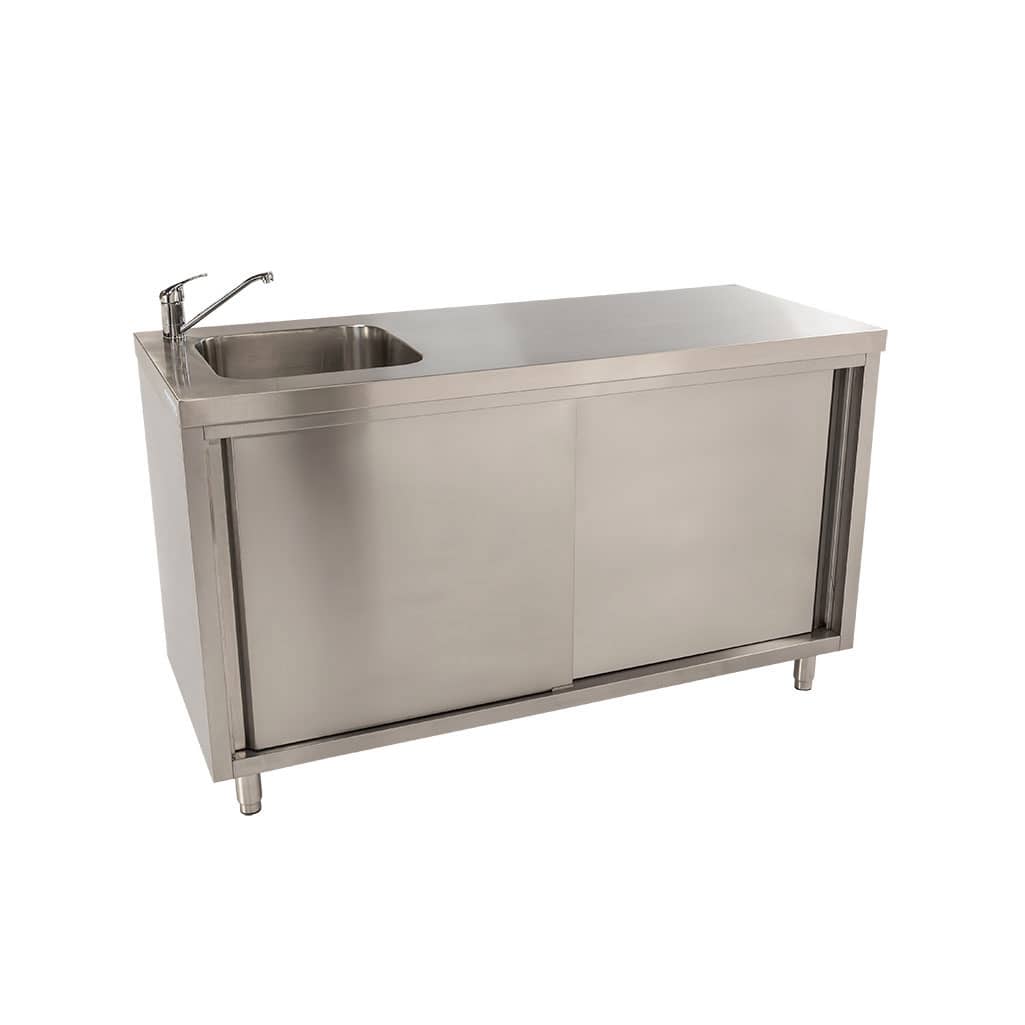Choosing the Right Stainless Steel Sink

Yo, so you’re tryna get a new sink, and stainless steel is the way to go, right? It’s durable, looks super sleek, and it’s easy to clean. But with so many different options out there, it can be tough to know which one’s the best for your kitchen. Let’s break it down, fam!
Stainless Steel Grades
Stainless steel sinks are made from different grades of steel, which affect their durability, resistance to rust, and even their price. Here’s the lowdown:
- 18/10 Stainless Steel: This is the best quality stainless steel for sinks. It’s got a high chromium (18%) and nickel (10%) content, making it super resistant to rust and corrosion. It’s also known for its sleek, polished finish and its ability to withstand scratches and dents. It’s the bomb.com, but it’s also the most expensive.
- 16/10 Stainless Steel: This grade has a slightly lower nickel content than 18/10, making it a bit less resistant to rust and corrosion. However, it’s still pretty durable and offers a good balance of quality and affordability.
- 304 Stainless Steel: This is a popular grade used in a lot of kitchen appliances. It’s known for its strength and durability, and it’s resistant to rust and corrosion. It’s a good choice for sinks, but it might not be as resistant to scratches and dents as 18/10 stainless steel.
- 430 Stainless Steel: This is the cheapest grade of stainless steel, and it’s not as resistant to rust and corrosion as the other grades. It’s often used for sinks in lower-priced kitchens, but it’s not as durable as the higher-grade options.
Sink Styles
Alright, so now that you’ve got a handle on stainless steel grades, let’s talk about sink styles. There are a bunch of different styles to choose from, each with its own pros and cons.
- Undermount Sinks: These sinks are mounted underneath the countertop, giving your kitchen a super clean and modern look. They’re easy to clean since there’s no lip to catch food or debris. However, they’re more expensive to install than top-mount sinks.
- Top-Mount Sinks: These sinks are installed on top of the countertop, making them a more affordable option than undermount sinks. They’re also easier to install yourself. However, they can make cleaning a little bit more of a pain, since there’s a lip to catch debris.
- Farmhouse Sinks: These sinks are super deep and have a large apron that extends out in front of the countertop. They’re a popular choice for farmhouse-style kitchens, and they’re perfect for soaking large pots and pans. However, they’re also the most expensive type of sink.
Sink Features, Stainless steel sink for 30 inch cabinet
Here are some additional features you might wanna consider when choosing your sink:
- Sound Dampening: Some sinks have sound-dampening features to reduce the noise of running water. These features can be super helpful if you’re worried about noise in your kitchen.
- Insulation: Some sinks are insulated to prevent condensation from forming on the bottom of the sink. This can be helpful if you live in a humid climate.
- Scratch Resistance: Stainless steel sinks are generally pretty scratch-resistant, but some brands offer sinks with extra-durable finishes that are even more resistant to scratches and dents.
Popular Stainless Steel Sink Brands
There are a ton of brands out there, but here are a few popular ones:
| Brand | Key Features |
|---|---|
| Kohler | Known for their quality and durability. They offer a wide range of styles and features, including sound dampening and insulation. |
| Blanco | A German brand known for their sleek and modern designs. They offer a variety of sink styles, including undermount and top-mount. |
| Elkay | An American brand that offers a wide range of affordable stainless steel sinks. They’re known for their durability and ease of installation. |
| Rohl | A luxury brand known for their high-quality stainless steel sinks. They offer a wide range of styles and features, including custom finishes and hand-hammered designs. |
Dimensions and Installation Considerations

So, you’ve chosen the perfect stainless steel sink, but now you gotta figure out how to get that bad boy in your kitchen! Don’t sweat it, fam, we’re gonna break down the dimensions and installation process, making it easier than ordering a pizza.
Standard Sink Dimensions
First things first, you gotta make sure your sink fits in that 30-inch cabinet. A standard 30-inch cabinet can usually handle a sink with a width of 25 to 27 inches. You’ll also want to consider the depth of the sink, which can range from 8 to 10 inches. The overall length of the sink can vary depending on the number of bowls and the design. For example, a double-bowl sink might be 30 to 33 inches long, while a single-bowl sink might be around 25 inches.
Sink Placement
You wanna make sure your sink is positioned right in the cabinet, otherwise, you’ll be dealing with some major plumbing issues. The sink should be placed so that the drain is centered over the drainpipe in the cabinet. You’ll also want to consider the countertop overhang, which is the amount of countertop that extends beyond the edge of the sink. A typical overhang is 1 to 2 inches.
Installation Process
Installing a stainless steel sink isn’t as hard as it looks, but you’ll need a few tools and some patience. Here’s the lowdown:
- Tools you’ll need: You’ll need a few tools to get the job done, like a level, a tape measure, a drill, a jigsaw, and a wrench.
- Cutting the countertop: First, you gotta cut a hole in the countertop for the sink. Use a template provided by the sink manufacturer or create your own using cardboard. Use a jigsaw to carefully cut the hole.
- Installing the sink: Now, you’ll need to install the sink in the countertop. Most sinks come with clips or brackets that secure the sink to the countertop. You may need to use a wrench to tighten the clips or brackets.
- Connecting the plumbing: Once the sink is installed, you gotta connect the plumbing. This involves attaching the drainpipe, the faucet, and the water supply lines. Make sure all connections are tight and secure.
Step-by-Step Installation Guide
Ready to rock and roll? Here’s a step-by-step guide to help you install that stainless steel sink:
- Gather your tools and materials: Get all your tools and materials ready, including the sink, the countertop, the drainpipe, the faucet, the water supply lines, the installation instructions, and any other necessary components.
- Prepare the countertop: Make sure the countertop is clean and dry. Use a tape measure to mark the location of the sink on the countertop.
- Cut the hole: Use a jigsaw to cut the hole in the countertop according to the template. Be careful not to cut too deep, and make sure the hole is the correct size.
- Install the sink: Place the sink in the hole and align it with the countertop. Secure the sink using the clips or brackets provided.
- Connect the plumbing: Connect the drainpipe, the faucet, and the water supply lines to the sink. Make sure all connections are tight and secure.
- Test for leaks: Turn on the water and check for any leaks. If there are any leaks, tighten the connections or replace any faulty parts.
- Clean up: Clean up any debris or spills.
“Remember, fam, if you’re not comfortable with DIY, you can always call a professional plumber to install your sink. It’s better to be safe than sorry!”
Maintenance and Care: Stainless Steel Sink For 30 Inch Cabinet

Yo, so you’ve got yourself a sweet stainless steel sink, and you wanna keep it looking fresh for years to come. That’s where proper maintenance comes in, and it’s actually pretty easy. Just follow these tips and you’ll be chillin’.
Cleaning and Maintenance Practices
Keeping your stainless steel sink clean is key to preventing stains, scratches, and water spots. Think of it like keeping your car clean – it’ll look better and last longer. Here’s the lowdown:
- Clean it regularly: Don’t let grime and gunk build up. Wipe down your sink after each use with a damp cloth and mild dish soap. You can also use a soft sponge or a microfiber cloth.
- Avoid harsh chemicals: Bleach, ammonia, and other harsh chemicals can damage the finish of your stainless steel sink. Stick to mild cleaners and avoid using abrasive cleaners or scouring pads.
- Dry it thoroughly: After cleaning, make sure to dry your sink thoroughly with a clean cloth. This will help prevent water spots and mineral buildup.
- Don’t leave standing water: Standing water can lead to stains and mineral buildup. Flush your sink with water after each use to prevent this.
- Be careful with sharp objects: Avoid using sharp objects on your sink, like knives or metal utensils. These can scratch the surface and make it more susceptible to stains.
Recommended Cleaning Products
Here’s the scoop on some of the best cleaning products for your stainless steel sink:
- Mild dish soap: This is your go-to for everyday cleaning. Just a few drops mixed with warm water will do the trick.
- Baking soda: Baking soda is a natural abrasive that can help remove stubborn stains. Make a paste with baking soda and water, apply it to the stain, and let it sit for a few minutes before scrubbing with a soft sponge.
- White vinegar: White vinegar is another natural cleaner that can help remove water spots and mineral buildup. Simply spray white vinegar on the affected areas and let it sit for a few minutes before wiping it away with a clean cloth.
- Stainless steel cleaner: For a deeper clean, you can use a stainless steel cleaner. Just make sure to follow the instructions on the bottle.
Common Issues and Solutions
Sometimes, even with the best care, issues can pop up with your stainless steel sink. Here’s how to deal with some common ones:
- Scratches: Scratches can be caused by sharp objects or abrasive cleaners. You can try to polish out minor scratches with a stainless steel polish. For deeper scratches, you may need to consult a professional.
- Stains: Stains can be caused by hard water, food spills, or rust. You can try to remove stains with a baking soda paste, white vinegar, or a stainless steel cleaner. If the stain is stubborn, you may need to consult a professional.
- Water spots: Water spots are caused by mineral buildup. You can remove water spots with white vinegar or a stainless steel cleaner. To prevent water spots, dry your sink thoroughly after each use.
Stainless steel sink for 30 inch cabinet – Okay, so you’re thinking about a stainless steel sink for your 30-inch cabinet. That’s a great choice, it’s super sleek and modern. And since you’re going for that updated look, you might want to think about painting your cabinets too! Check out what colors does Rustoleum cabinet transformations come in for some inspiration.
You could even match the color of your cabinets to the finish of your new sink for a really cohesive look! So many possibilities, right?
So, you’re looking for a stainless steel sink for your 30-inch cabinet, right? Totally get it, gotta have that sleek, modern look! Maybe you’re even thinking about moving to a new place with a smaller kitchen. If you’re considering Birmingham, AL, you might want to check out some cheap one bedroom apartments in Birmingham, AL – who knows, you might find a place with a kitchen that fits your new sink perfectly! But hey, back to the sink, gotta find the right one, you know, one that looks good and fits perfectly in your cabinet.